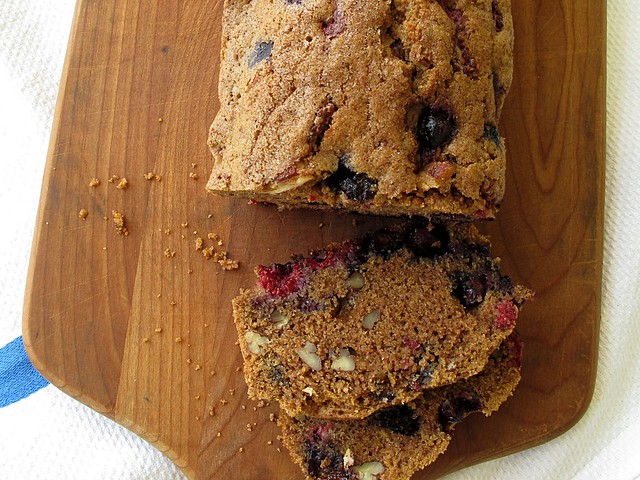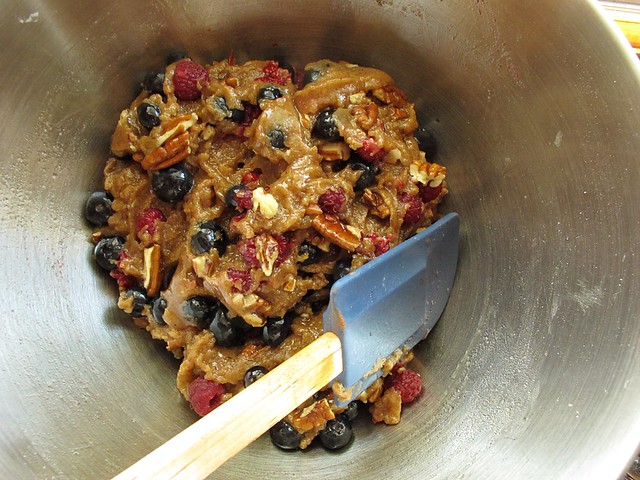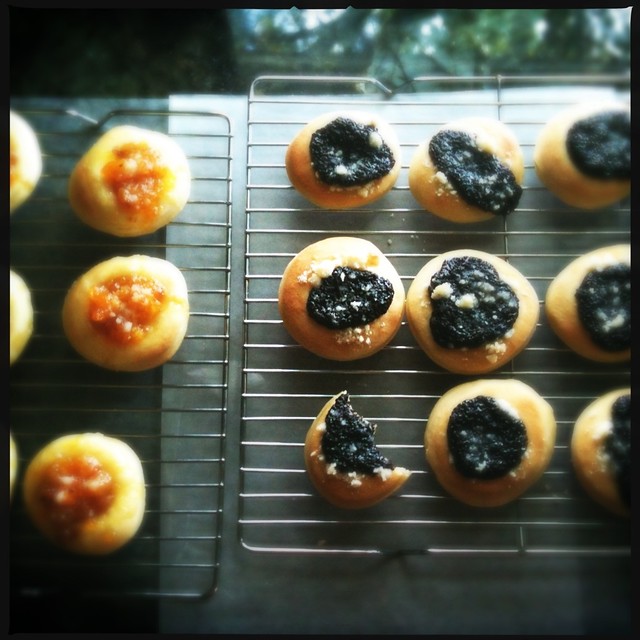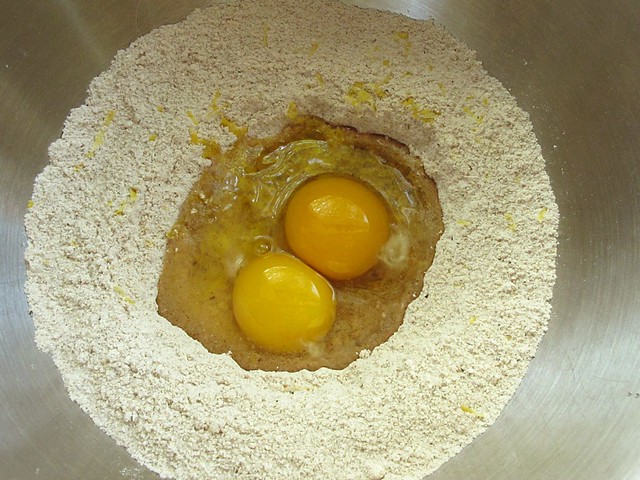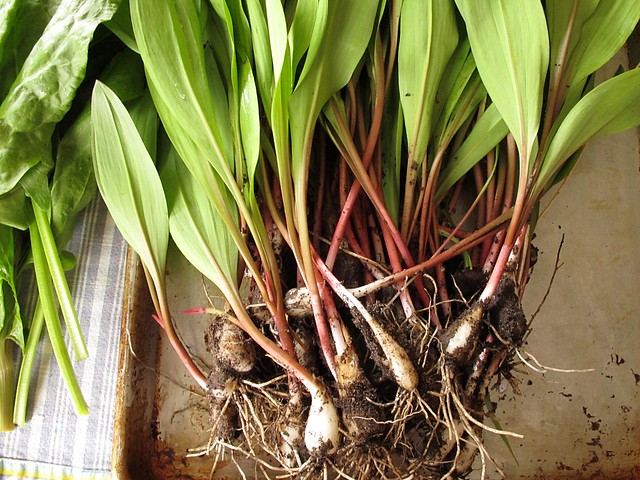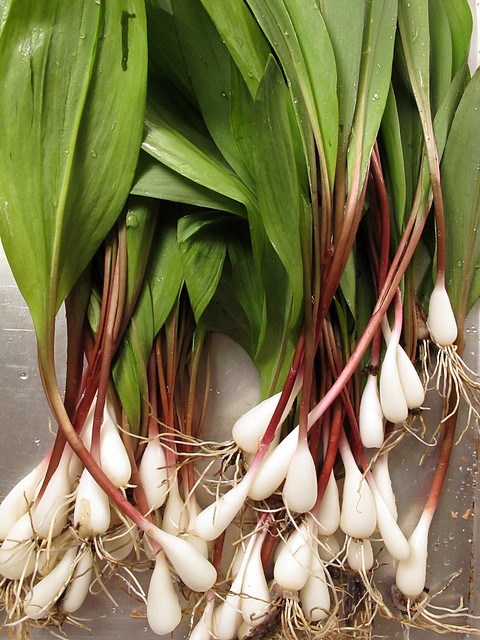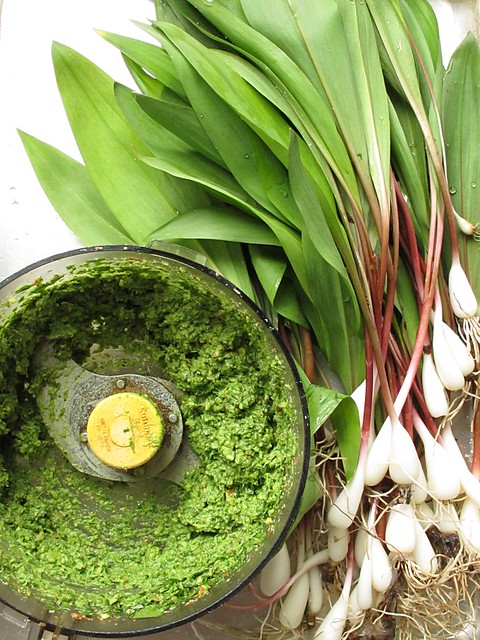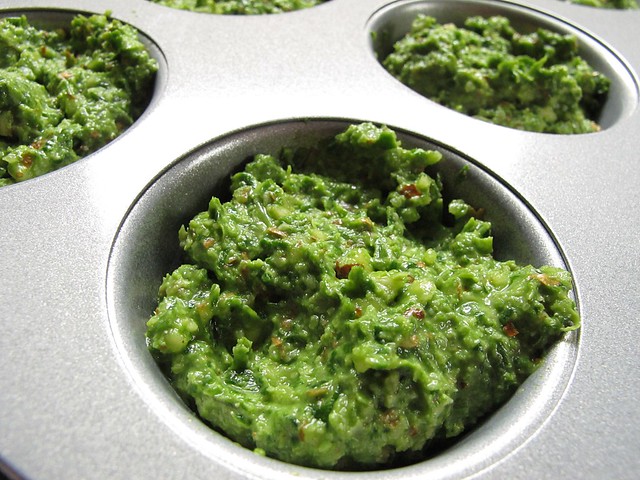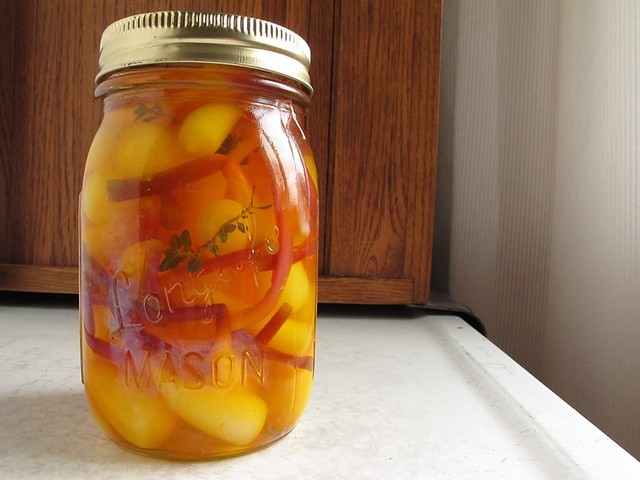It's true, I get obsessed. And easily at that. Last night, I went to a cooking class at the
Bay View Community Center taught by Annie Wegner-LeFort on Summer Vegetarian Cooking. I went because I like taking classes, because I like cooking seasonal vegetarian, and because I really wanted to meet Annie. I didn't realize that I kind of already knew and admired her from afar. A huge light bulb lit over my head when I found out that she is the pastry chef at
Sheridan's, where I had the most memorable chai shortbread cookie several months ago...
I had read the press release when they opened the restaurant and boutique hotel, and dismissed it to my mental warehouse. Sometimes I feel as if I move in obscure circles around people - ingesting information that is learned and then stored, until I realize I've gleaned so many little bits that they add up to a mostly complete picture, sans actual meeting. That's good, and yet a bit sad that I only know people from a voyeuristic Internet reality...
Annie's class was really great. Some people, are just natural teachers, and I like watching them, as I feel that I am not. I like to think I'm a natural consultant, which is a far less noble profession than teaching. If I've read it, likely it is rolodexed in my mind, and ready to pop out of my mouth at opportune (and inopportune) moments... but good teachers need the tact and gentleness to repeat themselves, the ability to be gracious and generous with themselves to others, and the good ones accomplish this with such ease it fills me with envy.
While I could tell I felt kindred-ly at home with the recipes she provided us in print, this one that really impressed me most was one I actually already had in my possession, and yet never have tried: Cilantro-Raisin Chutney from
Sally Fallon's Nourishing Traditions. Before the class started, I read over our handout and politely dismissed this little gem of a recipe, and so wrongfully so. When I had my first taste, obsession quickly set in. Although it was a vegetarian cooking class, she mentioned that it was great on pork, serendipitous since that is what I had already planned for supper tonight. Needless to say, I got some cilantro today (I've left mine to seed, so I can replant), and made up a batch. I will be reveling it it until the weekend, methinks.

I was excited to share my new obsession with my Husband, who is also a cilantro fan. He was briefly excited, until he felt the sting of "licorice-ness" on his tongue. He even went as far as to tell me he thought it was really good, until he discovered that licorice aftertaste. The anise seed is what he tasted, and I love this so much, that I'll leave it out on the next go around to see if it appeals to him more; he is an avid hater of licorice.
To glean the whey needed (which could easily be omitted), I strained some of my yogurt, which came in handy for the taste-testing. I ended up eating my afternoon snack of yogurt mixed with this versatile condiment and a few grains of raw sugar, perfection in my book. I could eat this chutney as a soup, I'm pretty sure - but I now know that it will end up on sandwiches, bread (I'm thinking flat bread of some sort here), lentil burgers (another great recipe Annie provided) as well as just about anything else I can think of. It's really that good.
I found that I didn't need to add any additional water, but you can add it to your preference.
Cilantro-Raisin Chutney (inspired by Annie Wegner-LeFort, by way of Sally Fallon)
- 1 1/2 c. raisins, soaked in warm water for 1 hour
- 2 cloves garlic, peeled and chopped
- 1 small bunch of cilantro, stems removed
- 10 black peppercorns
- 1/4 t. red pepper flakes
- 1 t. powdered coriander
- 1 t. cumin powder
- 1 1/2 t. freshly grated ginger
- 1 t. sea salt
- 2 T. whey
- 1/2 c. water
Pulse garlic and cilantro in a food pro until coarsely chopped. Drain raisins, and add to processor along with remaining ingredients, except water. (You can also toast the spices gently in a cast iron skillet, I did this even though I had to use some powdered spices.) Add water judiciously until your desired consistency is reached.
Pack into a clean glass jar, and let sit at room temperature for 2 days before transferring to cold storage.
(Annie also mentioned that this recipe freezes well, not that I'm going to need to find out. ) I have plans for this stuff for the rest of the week, and just thinking about it makes me excited all over again.
Almost as excited as this modified slaw that I've been eating since yesterday:

Cabbage, green pepper, Hungarian wax peppers, jalapeno peppers and a bit of celery seed tossed with salt and a little sugar and left to drain in a colander at room temp for a few hours until some of the moisture has drained out. Tonight, I mixed what wasn't already eaten with rice wine vinegar and olive oil. Still crunchy, still addictive - and really ready for just about anything. I had some on a ham and cheese sandwich for lunch today and why I'd ever need another condiment, I don't know. My Husband did like this one on the side of his pork chop, and what he didn't eat, I happily lapped up off his plate for him. (I feel like planning ahead and soaking some wheat berries to toss with the rest, but I have too much other stuff to eat up! Ahhh, summer.)
I feel somewhat geeky for getting so excited about the condiment side of things. I mean, these are no projects requiring time and attention for days, these are amazements that can be concocted with abandon in mere moments! Their flavors are varied enough to be enjoyed with a host of different cuisine options for days before their welcome wears on, and they really are Obsessions.
I couldn't be happier that I attended this class, and that this recipe is mine to be made for years on into the future. Whenever I taste it, I will happily be transported back to that little Bay View Community Center classroom and Annie's description of it, and that makes it even better. Be sure to go and pay Annie a visit at her blog,
The LeFort Urban Homestead, you will be then be full of inspiration and new obsessions of your own. She can have that effect on people.
